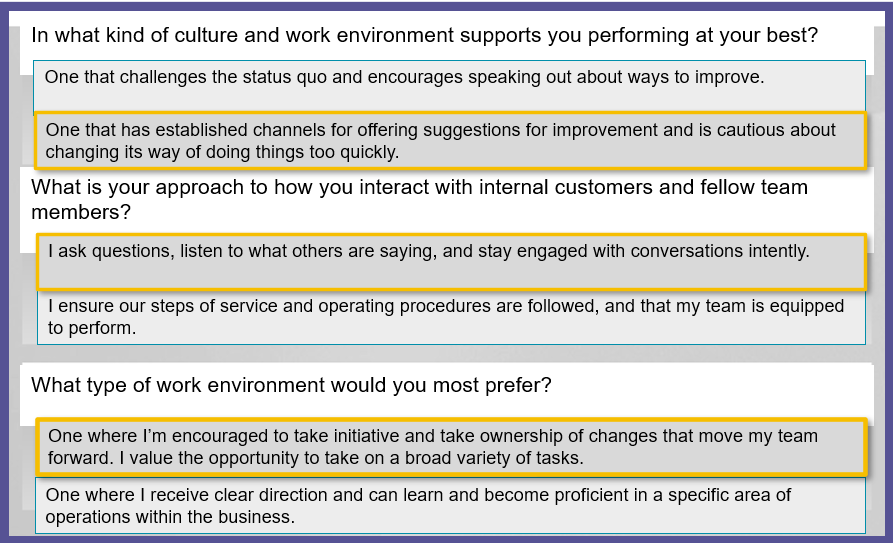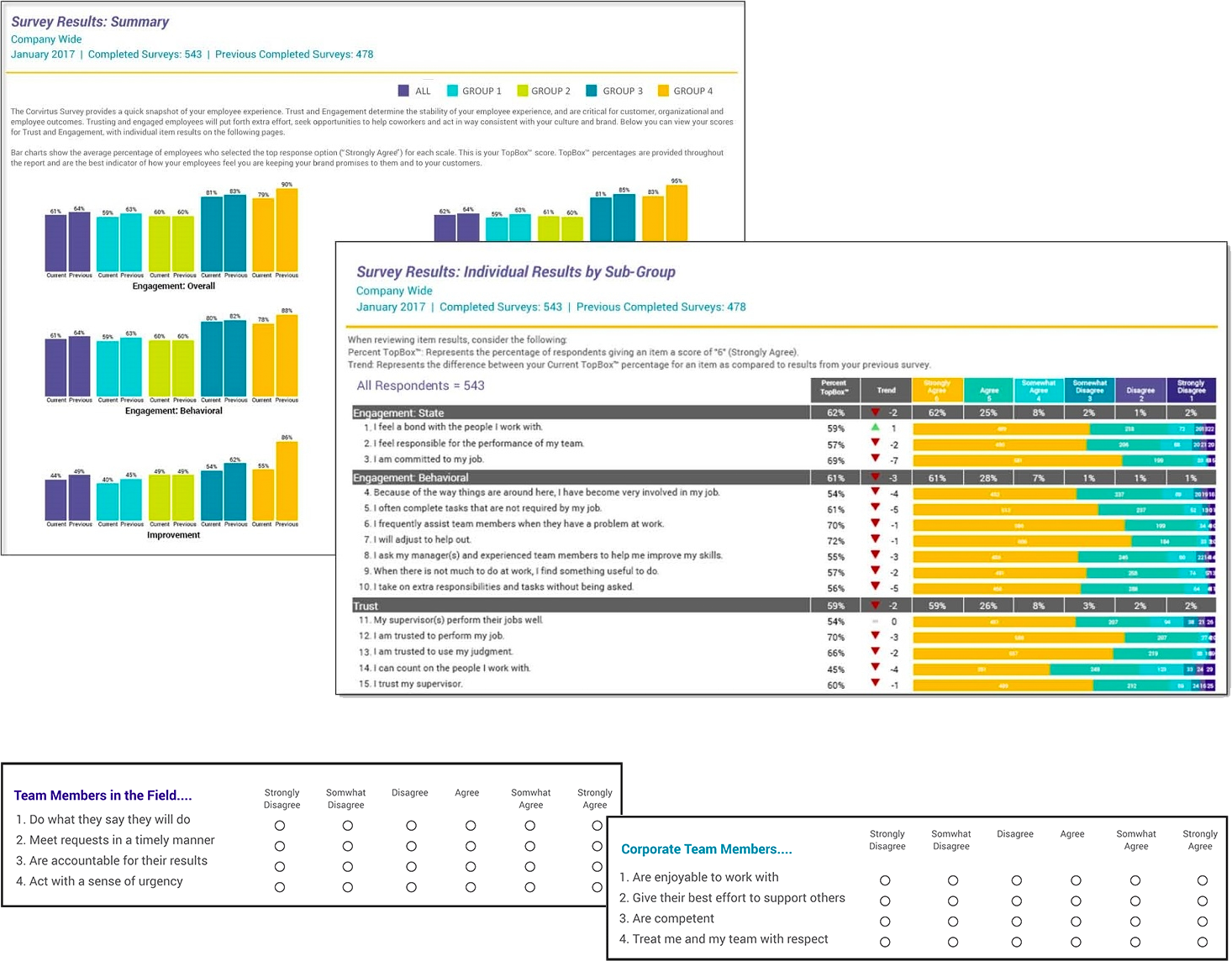Recruiting and Dating: How we approach major decisions
Let's start with a common analogy. Selecting a long-term partner is both stressful and costly: online dating alone is a $2 billion dollar industry, and people spend years dating and fine-tuning both their preferences and process for this ultimate 'hiring' decision. When we date, we spend time with potential 'hires' in a variety of contexts to see if you share the same goals and preferences.
Overall, we want a realistic preview of what life with this person would be like. We spend time with each other’s families, explore common interests, and share joys, challenges, and events together. We aren't the first to compare dating and marriage decisions to hiring, but the analogy is as popular as it is helpful.
.png?width=675&height=675&name=Blog%20Quote%20%20(3).png)
The early employee experience....when the honeymoon ends.
Now, when we talk about a honeymoon period we're usually talking about disappointment that happens early in a relationship. Like their post-nuptial vacation counterparts, honeymoon periods are short-lived. To pick up our dating metaphor, after a few months in any relationship our expectations slowly, or sometimes not so slowly, crash into reality. This is how we end up with a honeymoon hangover.
If we think about the job search and early employment experience we see a similar effect – only as candidates we're working with far less information and experience with one another. We're making job choice decisions under time constraints often with immediate financial needs and other demands in the mix.

We're still, however, making a decision that will determine how we spend spend the majority, or a good deal, of our waking hours. When we make a major decision, we want to believe they made the right choice. But with limited information available, we try to pull as many facts and inferences as we can out of the little things. Friendly emails from a recruiter, the look and feel of the work environment, a smile or brief warm conversation from a potential colleague; each of these is a source of information of what our future could look like.
We may be happy to lean into those moments and remain blissfully unaware of the potential challenges ahead. New hires frequently begin jobs with little understanding of the difficulties they are about to face, whether it’s juggling a heavy workload, or navigating the company culture. The fact that nearly half of us regret our decision in the first week supports this.
It’s also normal for us to bring our best selves for the first couple months on a job, doing everything possible to build a bright reputation and perhaps suppressing their natural personality and working to the point of strain and burnout. After a few weeks or month on the job, satisfaction and engagement can plummet resulting in poor performance and turnover – the honeymoon hangover. Even if a disappointed employee stays beyond this period, beliefs and perceptions from the first weeks on the job linger to potentially derail results later. As stewards of our teams we have only the first five weeks to earn the trust and commitment of those that chose to join us.
Realistic Job Preview: Closing the Gap Between Expectations and Reality
While no one piece of HR or recruiting technology can universally solve this problem, realistic job previews can deliver momentum to move forward. RJPs represent a spectrum of experiences for candidates that deliver a transparent and honest look at the job's demands, challenges, and culture.
.png?width=680&height=510&name=Four%20Part%20Diagrams%20-%20blogs%20and%20things%20(1).png) When companies use our realistic job previews, they're less likely to leave, more engaged, enjoy a richer candidate experience, and and benefit from the hiring process more overall. This is because we offer candidates a straightforward and honest look at the role, highlighting both the perks and the challenges. By doing so, we can foster trust, boost retention, and attract employees who are a perfect match. If our aim is to give candidates a realistic preview, we have plenty of fun and creative ways to do it. This might include -
When companies use our realistic job previews, they're less likely to leave, more engaged, enjoy a richer candidate experience, and and benefit from the hiring process more overall. This is because we offer candidates a straightforward and honest look at the role, highlighting both the perks and the challenges. By doing so, we can foster trust, boost retention, and attract employees who are a perfect match. If our aim is to give candidates a realistic preview, we have plenty of fun and creative ways to do it. This might include -
Videos can offer a peek into the work environment, which is super helpful for roles in bustling kitchens or busy manufacturing settings. Plus, hearing from employees who openly share both the great moments and the challenges they face every day can be really insightful! The United States' TSA has one we feel does a great job at this for security officers.
 Sample written RJP content for nursing aides sharing metrics from recent team member engagement surveys.
Sample written RJP content for nursing aides sharing metrics from recent team member engagement surveys.
Written testimonials and content that could be sprinkled not just on your online careers page but also tucked into the application, and even slipped into physical brochures to hand out like candy at a job fair or during an interview.

Simulations and assessments. Think of these as the virtual reality of job interviews, where candidates are tossed into the deep end of hypothetical work scenarios or quizzed about their dream job conditions. Our solutions . This way, you can see if your career aspirations align with the job without the pressure of impressing anyone. And no matter how you fare in this digital dress rehearsal, you're always invited to strut your stuff in the next stage of the hiring process.

Job Observation. There's really nothing quite like getting a firsthand look at the work environment. Job observations, or shift follows, are a great way to do just that. If you're inviting a candidate for an interview, having them shadow someone on the job for a bit can be a fantastic idea. It not only gives them a real feel for the role but also sets the stage for more meaningful questions and conversations during the interview.
With how easy it is to apply for jobs these days, it's important to remember the value of educating and informing candidates, which often gets overlooked. Many of us (over three-quarters of the workforce) feel comfortable going for a job even if we don't tick all the boxes. That's awesome because it opens up more opportunities and enriches the pool of applicants. But if we don't take steps to share how our core values shine through our culture and what the job really entails, we might miss out on boosting new hire engagement, performance, and retention. Plus, we could be passing up the chance to connect with candidates who have great potential for growth and success.
RJPs are tailored and helpful guides to support candidates during the selection process. When intentionally built and implemented they work to reverse both the, "I didn't know that was my job," and "Why am I interviewing this person?" problems seek to prevent. They give potential job seekers a clear picture of the organization and the roles they might step into. It's best to share RJPs before diving into other hiring steps, so candidates can make informed choices right from the start. These previews can come in the form of videos, detailed write-ups, or even fun assessments. When done right, RJPs can really make a difference by reducing turnover, finding the right fit, boosting employee commitment and satisfaction, and even making training more successful. And don't worry, while most candidates will continue on, the small number (around five percent) who decide to step back are likely those who might have faced challenges like turnover or dissatisfaction if they had joined.
Enhancing the New Employee Experience: Successful Onboarding
Hiring cannot be the only solution. With nearly half of employees experiencing regret sometime in their first week, it makes sense to reevaluate how we welcome, engage, and educate those joining our teams. It's not only that our onboarding efforts are too short. New team members require meaningful connections with supervisors, colleagues, and important organizational contacts. Our research finds success in onboarding rests on supervisor commitment. Specifically, employees are more than four times as likely to report an exceptional onboarding experience when their managers actively participate in the process and take ownership of the success, or failure of the process.
Unfortunately, many supervisors struggle to deliver the support needed to support new hires during onboarding, and numerous organizations—regardless of size—fail to implement touchpoints that extend beyond initial training and 'how do I access....?' training. This oversight deprives new members of our teams of crucial relationship-building opportunities needed to nurture growthfor workplace success.
What if we could make it simple? The following three-step approach can help leaders create strategic onboarding processes that position new hires for success while improving retention rates.
1. Set Clear Objectives and Success Metrics
When you're setting up your onboarding process, whether you're leading a team or expanding a program, it's a great idea to start by looking at your goals through the lens of the four Cs:
- Compliance
- Clarification
- Culture
- Connection
Here are some key questions to consider:
- Have you clearly identified and communicated necessary regulations, policies, and procedures? Where are the biggest gaps? Would gathering feedback from newer employees help you uncover these?
- Are job expectations explicitly defined with specific, time-bound expectations for performance?
- How will employees learn about the culture? How can they simultaneously learn your values and ways of doing things while building relationships?
- What are a few key aspects of training and onboarding that must be improved in the near-term? Why? Does everyone agree, and what evidence do you have that those are the key areas for improvement?
- How will you promote and sustain healthy work-life flow and well-being for new team members during, and following, their onboarding period?
After developing objectives addressing all four Cs, determine how you can measure your success (whether for your own team or those you're supporting). Your metrics should directly correlate with your goals, incorporating both quantitative measures (such as first-year retention percentages, or employee ratings) and qualitative assessments (including participant feedback on their onboarding experience). Developing realistic and meaningful goals and metrics necessitates input from various organizational stakeholders, so schedule time for listening and feedback before proceeding.

Photo by Andreea Avramescu on Unsplash
2. Build a Cross-Functional Onboarding Team
Improving the early employment experience requires an onboarding approach that transcends HR involvement to include all relevant departments, key stakeholders, and executive leadership.
Teams do not exist in isolation; in fact, our success depends on the strength of our bonds with others. Why not communicate the importance of cross-team connection by making introductions and starting those relationships as early as possible? Before these connections occur, ensure existing team members understand the new hire's role and organizational responsibilities. While cultivating these relationships early might take some time (and even convincing), it encourages connection and makes it easier for new employees to reach out to other teams, and even establishes that as the expectation. If done well it can even increase the sense of ownership other departments feel for the success of new employees outside their own department.
Remember that new employees will interact with stakeholders beyond their immediate team. However, recognizing these connections and appropriate engagement approaches isn't always intuitive for newcomers. Managers can facilitate relationship development by providing a stakeholder directory with notes explaining each person's role and organizational significance. As a supervisor, monitoring these developing relationships is your responsibility—schedule check-ins with stakeholders to ensure networking progresses smoothly.
A frequently overlooked but essential introduction connects new hires with the CEO. In smaller organizations, arrange individual or small-group meetings between newcomers and organizational leadership. If logistical constraints make this impractical, consider town halls or special events bringing together recent hires, executive teams, and the CEO. Connecting newcomers with top leadership fosters organizational inclusion and reinforces the importance of their contributions to company growth.
Furthermore, CEO interactions provide direct insight into organizational culture and workplace experience expectations. Positive initial encounters with leadership create lasting impressions that enhance belonging and commitment, ultimately driving improved retention and performance.
3. Deliver Unwavering Support
During onboarding, managers should minimize administrative burdens while maximizing performance coaching and relationship-building opportunities. Ideally, HR has implemented technological solutions to facilitate these priorities. These platforms enable real-time implementation and tracking of onboarding best practices throughout each stage:
-
Precise pre-arrival preparation: New hires can access your organization's onboarding portal to view welcome messages, complete initial documentation, and receive their personalized onboarding schedule. You can verify that relevant stakeholders have been notified about the upcoming arrival.
-
Seamless first-day coordination: Track completion of day-one activities, including stakeholder introductions, workstation setup, equipment distribution, and initial learning modules. Collect immediate feedback (t regarding the first-day experience to enable prompt adjustments.
-
Monitor progress: Track engagement with critical organizational information, monitor completion rates for learning components, and assess how the onboarding experience impacts achievement of key integration goals at individual and group levels.
-
Reflect and Build: Dashboards and a process for consistent review can support you in knowing confidently what aspects of onboarding are successful and which are in need of improvement.

Ensure this platform integrates with your broader human resource management systems to effectively track how onboarding influences actual job performance and satisfaction levels among new employees.
What's the cheat code for a remarkable early employee experience and the results you're seeking to achieve? Unfortunately, the code rests within the unique blend of your culture, job demands, and traits required for success.
By educating and screening candidates during the hiring process, and then intentionally supporting their success when hired, we're on a path to boost rookie confidence, crank up engagement, and create an irresistible place to work.




